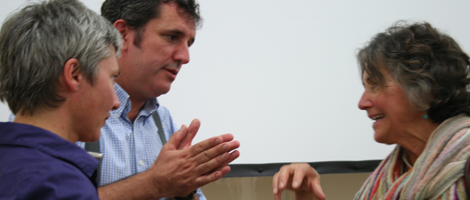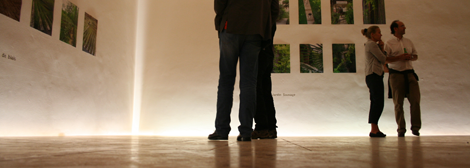| « A Journey to the Heart of the Stone | Movement and Stillness - Thandile Zwelibanzi » |
The secret life of plants may be not so quiet after all - Atelier le Balto @ Künstlerhaus
Then, as Marc says, "we made some scetches, ordered the plants, and then everything happens on location." This is the way they like to work, not planning a garden on the computer and then handing over the actual gardening, or importing readily grown trees that get implanted in the landscape, but getting close to the soil, planting everything themselves and then letting it grow, returning every now and then to cut, to add, but also to take out plants.
This can also be seen in their other featured project, "bois de biais" (the slant garden). They arrived in Métis, in Quebec province, in the spring of 2004, after only having seen pictures of the old gardenscape. When they found out they had to design a square space, not at all connected to the spaces being done by other participants, they didn’t want to do it any more. Then they thought of a trick, and tilted the square. Another problem was that the garden was supposed to be only for a year, which goes against their wanting to let it grow and develop over a longer period. This they circumvented by planting small willows and poplars in rows, intersected by wooden footbridges that remind you of a beach, as Véronique says. Those bands of wood are only 50 centimeters wide, forcing the people to actually rub up to the green around them, not just to take a picture and move on. Due to this, their garden in Métis has become a permanent one they return to every two years.
They also expanded the slant character of it by cutting the now grown poplar trees so that the first row was very small, the next one a bit taller, and so on. Due to more and more long-term garden projects they already have, and wanting to do more of them, they are now faced with the difficult decision of finding a dedicated gardener in whose care they can leave their green jewells in. As for them, the plants are not a material to use like any other, but a living one they always love to be surprised by. The exhibition "Wild und Schraeg" (wild and oblique) documenting these two gardens can be seen at the Kuenstlerhaus Salzburg until the 17th of September.



